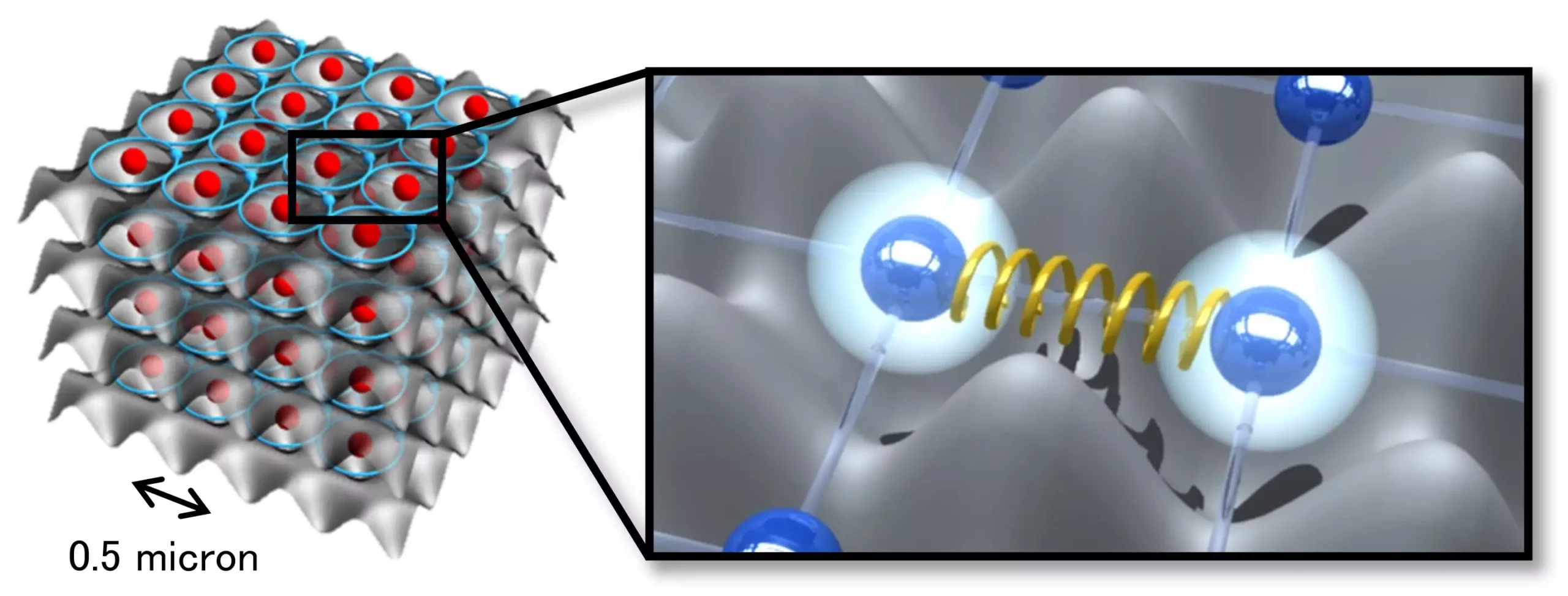Quantum mechanics has always pushed the boundaries of our understanding of the universe, and researchers are continually finding novel ways to harness its properties for technological advancement. Recent work conducted by scientists at the Institute for Molecular Science has unveiled groundbreaking results surrounding quantum entanglement, particularly through the exploration of Rydberg atoms. Their research, published on August 30 in *Physical Review Letters*, introduces a new quantum simulation method capitalizing on the strong interactions produced by Rydberg atoms. This newly proposed methodology might pave the way for advancements in quantum computing, simulation, and sensing.
Rydberg atoms are unique entities characterized by their highly excited states, possessing electrons that occupy expansive and diffuse orbits. The utilization of these atoms allows researchers to create quantum entanglement, a fundamental phenomenon crucial for developing sophisticated quantum technologies. These entangled states create correlations between atomic systems that can be manipulated for computational advantage, thus making them significant for applications in quantum technology.
To conduct their experiments, scientists employed laser cooling techniques to chill an ensemble of 300,000 Rubidium atoms to a frigid temperature of 100 nanokelvin. At such low temperatures, thermal noise is significantly minimized, allowing the researchers to trap these atoms with optical methods, creating an optical lattice with a precise spacing of 0.5 microns. Following this setup, the researchers initiated an intricate process involving the application of an ultrashort laser pulse, lasting just 10 picoseconds, which generated a quantum superposition between a ground state electron in the 5s orbital and a Rydberg state electron in the 29s orbital.
Previously, scientific exploration was hindered by a phenomenon known as Rydberg blockade, which limits the proximity of Rydberg atoms. This blockade occurs due to the interactions among excited atoms, which subsequently prevents the excitation of neighboring atoms to the Rydberg state. However, by employing ultrafast excitation through short laser pulses, the researchers circumvented this obstacle, allowing for a denser configuration of Rydberg atoms and a greater degree of quantum entanglement to be achieved.
As the experiment progressed, the authors meticulously analyzed the dynamics involved in the time-evolution of the generated quantum superposition. Their observations revealed that quantum entanglement between electronic and motional states formed within a remarkable timescale of a few nanoseconds. This new understanding demonstrates how the profound repulsive forces between Rydberg atoms directly contribute to the interdependence of the atom’s electronic state with its motional dynamics. In simplistic terms, the state of an atom being in the Rydberg configuration influences its movement, and vice versa.
This entangled phenomenon arises when the distance between Rydberg states aligns closely with the atomic wavefunction’s spread, at just 60 nanometers. The authors deftly managed to create this necessary spatial configuration through their precise control of atom spacing within the optical lattice, thereby allowing for an experimental observation that was previously impractical.
The authors have not only documented the dynamics of quantum entanglement but have also proposed a novel approach to quantum simulation that incorporates repulsive forces among particles. This method leverages nanosecond-scale excitations of atoms into Rydberg states using ultrafast lasers to control the repulsive interactions among atoms in real-time. Such advancements hold the promise of simulating complex systems that were previously inaccessible, enriching our understanding of particles’ motional states under the influence of repulsive forces.
This emerging methodology could ignite new quantum simulations across various fields, particularly in materials science, by allowing researchers to mimic and explore phenomena like electron interactions and their resulting structural dynamics within materials.
The research team is also at the forefront of creating an ultrafast cold-atom quantum computer, which aims to significantly enhance the operation of quantum gates. By employing Rydberg states for two-qubit operations, this innovative quantum computer is positioned to outperform conventional systems, improving operational fidelity while drastically reducing the time necessary for gate operations. The advancement of understanding how electronic and motional state entanglement contributes to these operations will be instrumental in enhancing the fidelity of quantum computing, setting the stage for future applications that could have vast societal implications.
The recent research from the Institute for Molecular Science marks a significant leap in our understanding of quantum entanglement and simulation. By unveiling the relationship between electronic and motional states in Rydberg atoms, this work not only enriches the field of quantum science but also lays a robust foundation for the future of quantum technologies across multiple domains.


Leave a Reply